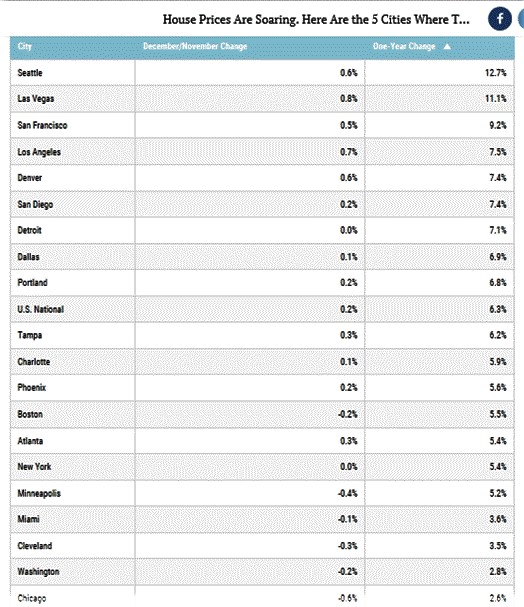Such is the state of housing prices in the U.S. that a Harvard University study from over the summer estimated that nearly 39 million Americans can’t afford their homes.
It’s not hard to see why. Hunger for real estate, along with shortage of supply, sent nationwide housing prices soaring last year—up by 6.3% according to the S&P CoreLogic Case Shiller Home Price Indices.
That pricing growth, however, was not matched by wage growth, which rose about 5.4% in the same period according to data from the Bureau of Labor Statistics.

“The rise in home prices should be causing the same nervous wonder aimed at the stock market after its recent bout of volatility,” says David Blitzer, Managing Director and Chairman of the Index Committee at S&P Dow Jones Indices in a statement.
That divide between wage growth and the jump in housing prices is even more apparent when looking back to the financial crisis. Based on 20 cities covered by S&P Corelogic Case Shiller Home Price Indices, those home values rose an average 62% since financial crisis lows, Blitzer notes—outstripping inflation’s 12.4% gain in the same period. Wage growth, meanwhile, rose about 27% in the same period.
So where are housing prices growing the fastest? It’s mostly in west coast cities. Denver, Los Angeles, San Francisco, Las Vegas, and Seattle were the top in 2017.
“Within the last few months, there are beginning to be some signs that gains in housing may be leveling off,” he said. “It is too early to tell if the housing recovery is slowing. If it is, some moderation in price gains could be seen later this year.”

